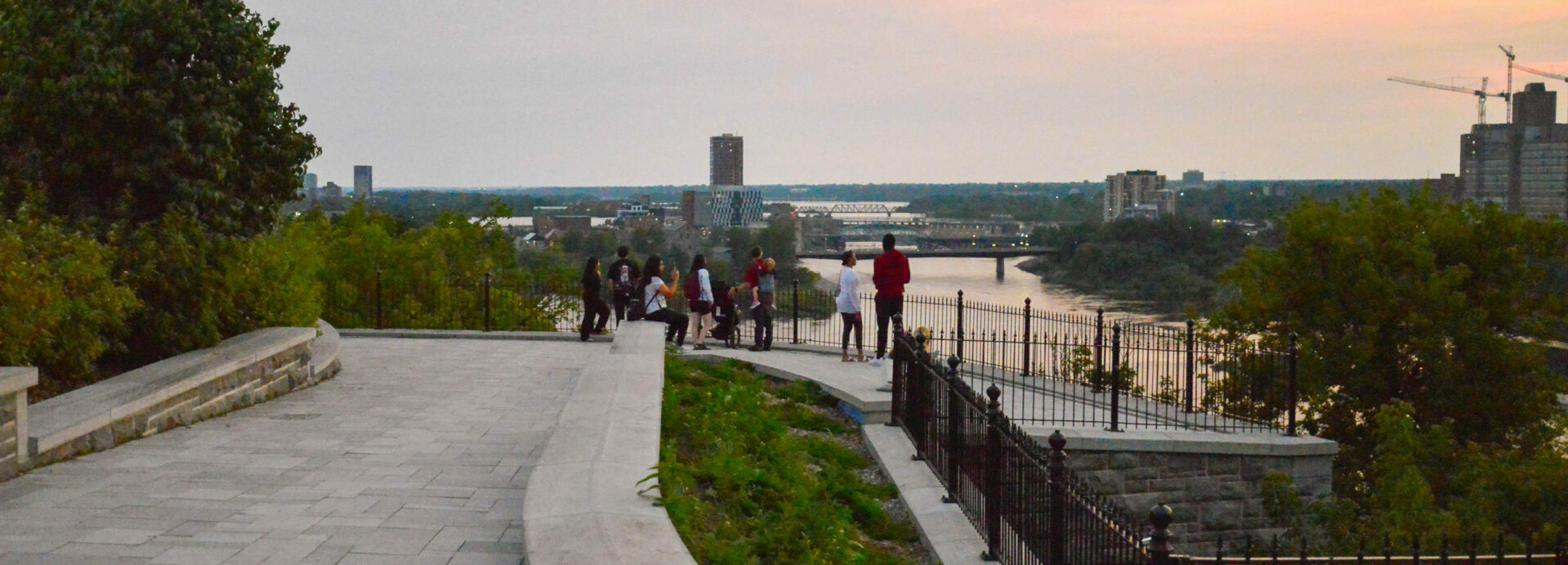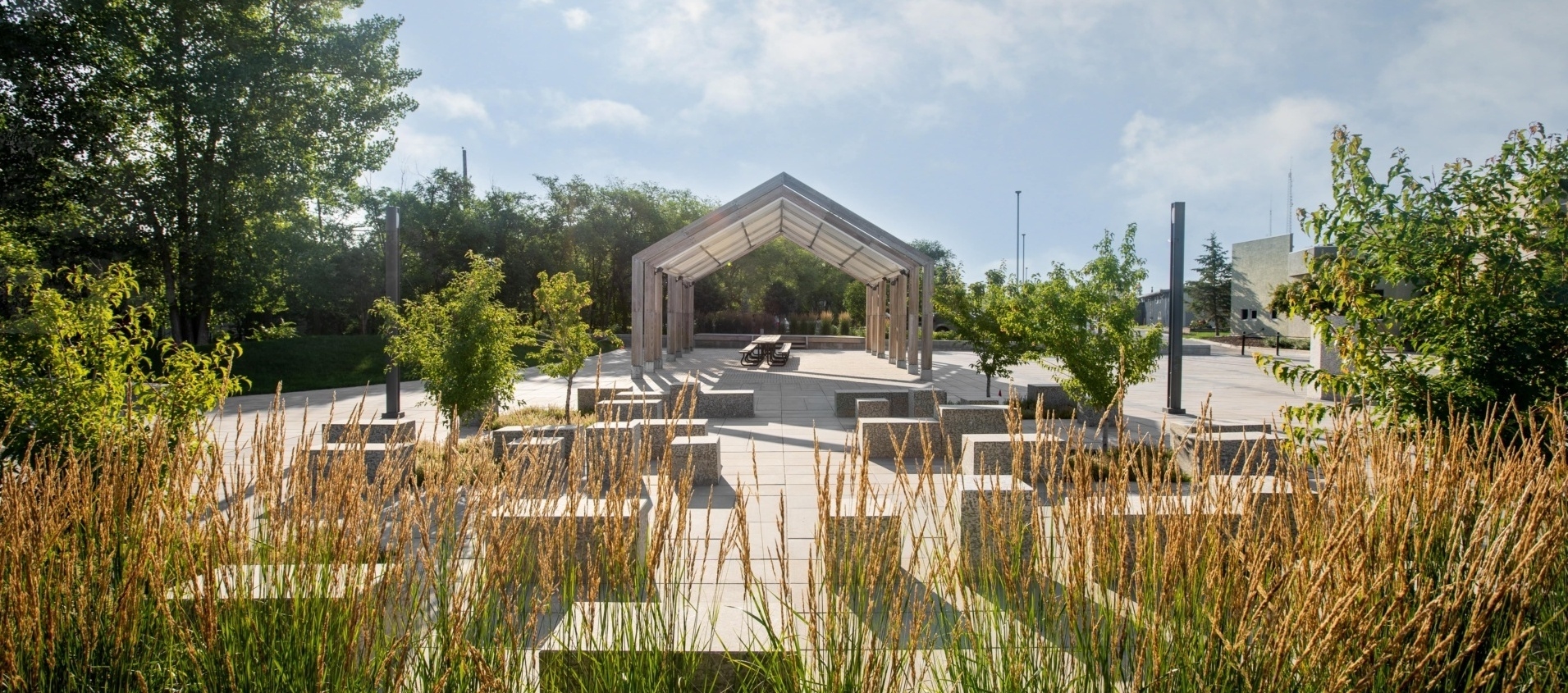April 24, 2024
During the month of April, Landscape Architects join their colleagues in celebrating and bringing awareness to landscape architecture. So, what is landscape architecture? Well in speaking with A49’s Landscape Practice Lead Bhavana Bonde, she recognizes that while many people believe that landscape is just the green portion of a project’s design, that is only one tenth of the role that the discipline plays.
Landscape design, sometimes also called urban design, goes beyond greenery or plantings. It is about sustainability, how a building is situated on a site, and everything outside of the building itself. As Bhavana notes, “we call it urban design sometimes because many of the projects we work on, there is no greenery surrounding the site or the building. So, its in the urban core and you have to think about how you design or orient the buildings on site, the pedestrian scales, the public circulation around the building and transport access.”

This means that regardless of whether there is greenery, what landscape design is doing is responding to and understanding the site and thus taking inspiration from the surroundings to develop a project that is in Bhavana’s words, “rooted in the habitat systems and the surroundings, making it more sustainable, culturally significant and rooted in the community.” Aaron Hirota, A49’s Ontario Landscape Practice Lead adds, “landscape architecture is vital to achieve a sustainable, functional, and aesthetically pleasing exterior space within the broader project framework. Landscape architects aim to create harmonious connections between built structures and the surrounding landscape, ensuring that the project blends seamlessly with its context.”
With 10 offices that serve communities across Canada, Architecture49 has projects in vastly different horticultural zones and habitat systems. The landscape practice is a national practice with landscape architects and regional leads in major cities across the country. While each landscape architect is rooted in their local communities the team works nationally together, learning from each other and experiencing designing in different environments from British Columbia to Newfoundland. This makes for interesting projects where our landscape team must consider things like what the landscape is on site, what are the existing plant species, are there any climatology factors, what are the sun patterns throughout the year, how is the site sloping and how do people naturally approach the site. This site planning, a part of landscape design, is the foundation of the design process, says Bhavana.

The landscape design considerations then go even further since in a country that features anywhere from four to six months in cooler temperatures, the indoor-outdoor integration of a building can play a significant role in the mental well-being of the building’s users. As Aaron puts it, “landscape architecture is a fascinating profession that combines art, science, and environmental stewardship to solve complex problems. We create places where people can connect with nature and each other, promoting well-being and community.” This means designing with the intention of abundant natural light, seeing greenery outside windows and being able to see seasonal changes. In Bhavana’s words, “humans are a part of nature, and landscape is a part of nature. So, landscape affects everybody’s life. From children to elders, whether you are in a childcare environment, a senior environment, [healthcare to defense, education and recreation], landscape affects those spaces.”
So, while World Landscape Architecture Month is celebrated during April, at Architecture49, we know that our amazing team of landscape architects and designers deserve to be celebrated all year as they elevate our projects to go beyond the building and integrate into the surrounding environment and local culture. Nicole May, Landscape Practice Lead for Atlantic Canada summed up the beauty of landscape architecture nicely when she said, “The sky is the ceiling and creative opportunities beneath it are unlimited.”

